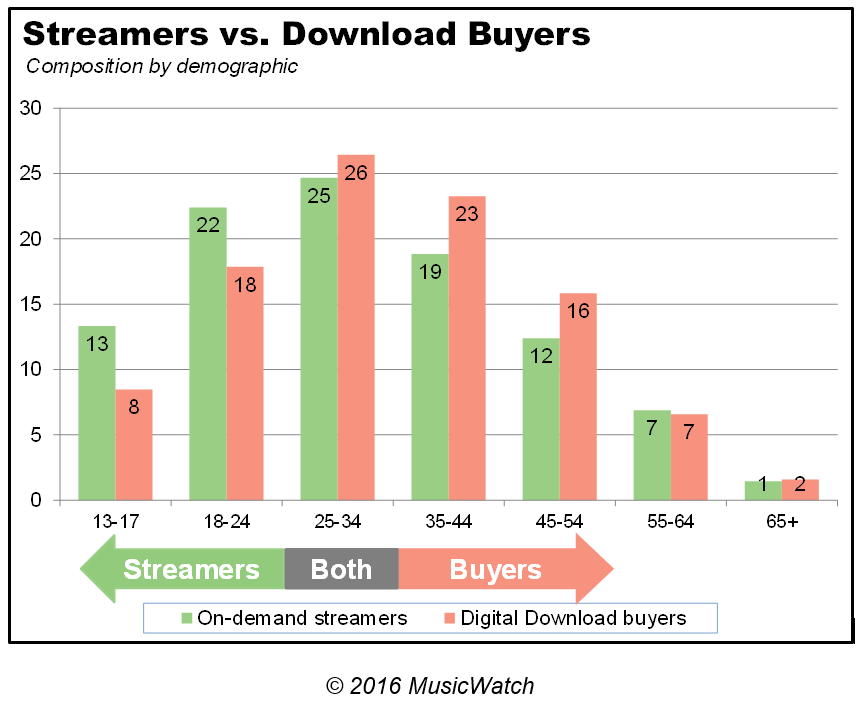In our last post, we concluded that even though on-demand streaming services such as Spotify are rapidly replacing paid digital downloads at online stores such as iTunes, song sales data is still a relevant metric for radio programmers to examine when considering new music for airplay.
While there’s merit in examining both streaming and sales data to gauge which new songs are popular, should you give more weight to one or the other for your specific station? That depends, in part, on how well your station’s format aligns with who uses Spotify and YouTube to consume new music versus who buys songs on iTunes.
We asked Russ Crupnick at MusicWatch about the differences in who uses on-demand streaming compared to who still pays to download and own their music. Here’s what we learned from their AudiocensusSM study from this past fall:
Streaming data is more heavily representative of teens and adults under 35. Of the people who routinely use on-demand streaming services, 60% are between 13 and 34 years of age and 35% are between 13 and 24 years of age. In comparison, only 26% of regular download purchasers are 13 to 24 years of age. That means on-demand streaming charts tend to favor the tastes of listeners under age 35.
Digital download sales data is more heavily representative of adults 25 and older. Fewer teens and young adults are purchasing digital music, and about half of the people who do still routinely buy digital music are between 25 and 44 years of age. That means that digital song sales charts tend favor the tastes of “money-demo” adults.
Among adults in their late 20s and early 30s, streaming and sales are equally representative. About a quarter of people who regularly use on-demand streaming and who regularly pay to download music are between the ages of 25 and 34.
Men and non-Caucasians are also both slightly more represented among streamers than downloaders. However, these differences are nominal compared to the differences between the age groups.
These demographic variances would suggest:
- If your ratings are most heavily dependent on the tastes of 13- to 24-year-olds, pay closer attention to streaming than sales.
- If your ratings are most heavily dependent on the 25- to 54-year-old demo, pay closer attention to sales data.
- If your ratings depend on 25- to 34-year-olds, pay close attention to both.
However, demographic differences are only a small part of the picture when it comes to which music consumers are using on-demand streaming and which consumers are still buying their favorite music.
In our next post, we’ll break out exactly which styles of music are most popular among on-demand streaming users compared to digital download purchasers, and how both streaming and song sales compare to the music that radio plays most.
Are you sure you’re picking the right new music? Integr8 New Music Research can help.


Pingback: Inregr8: Best Research For Radio — Sales Or Streaming? – New Music Radio Network
Pingback: Radio programming can take cues from song sales and streaming – RAIN News